26 house extensions – best house extension ideas for every budget
House extensions offer a cost-efficient and aesthetically pleasing alternative to moving house – be inspired by our roundup of ideas to get your project off the ground

House extensions offer a brilliant solution to households that are a little stuck for space. Whether you're not quite ready to move house altogether but need more room to get you through the next few years, or if you want to turn your house into your forever home by maxing out its potential, you're in the right place for advice on where to start and for inspiring house extension ideas too.
What's great about a house extension, is that it comes with options. Whether you're considering an orangery, or a simple rear home extension to keep costs down, there are a multitude of routes to take to help achieve your desired result, and to make the best use of your budget too. Whether you are on a tight budget or not, take a look at our advice piece on extending a house for a complete guide to budgeting, planning and designing your house extension. And, keep scrolling to see what you could achieve in your home – refining our list by specific price bracket if you wish.
Find a house extension to suit your budget
Want to build an extension for £20,000? We've got achievable suggestions for that, and much more. Whether your budget is £30,000, £50,000, or something in-between, we have plenty of innovative ways to make that house extension happen, in a way that suits your household needs and your financial situation. Even if you have much, much more to spend, we can show you how to add value to your home with an extension of a larger footprint.
Before making plans – whether a rear extension for a bungalow, a single storey extension for a 1930s semi, a loft extension on a terraced house, or an expansive double storey extension – this feature will give you an idea of what can be done with the money you have available.
Check out our guide on how to cut the cost of an extension for an overview of the costs involved, and where there may be opportunities to save along the way.
House extension ideas for budgets between £20,000 and £30,000
Some types of extension are cheaper than others – although what you choose needs to suit not just your budget but your needs, too. These fall into the category of house extensions for budgets between £20,000 to £30,000:
1. A simple room-in-roof loft conversion
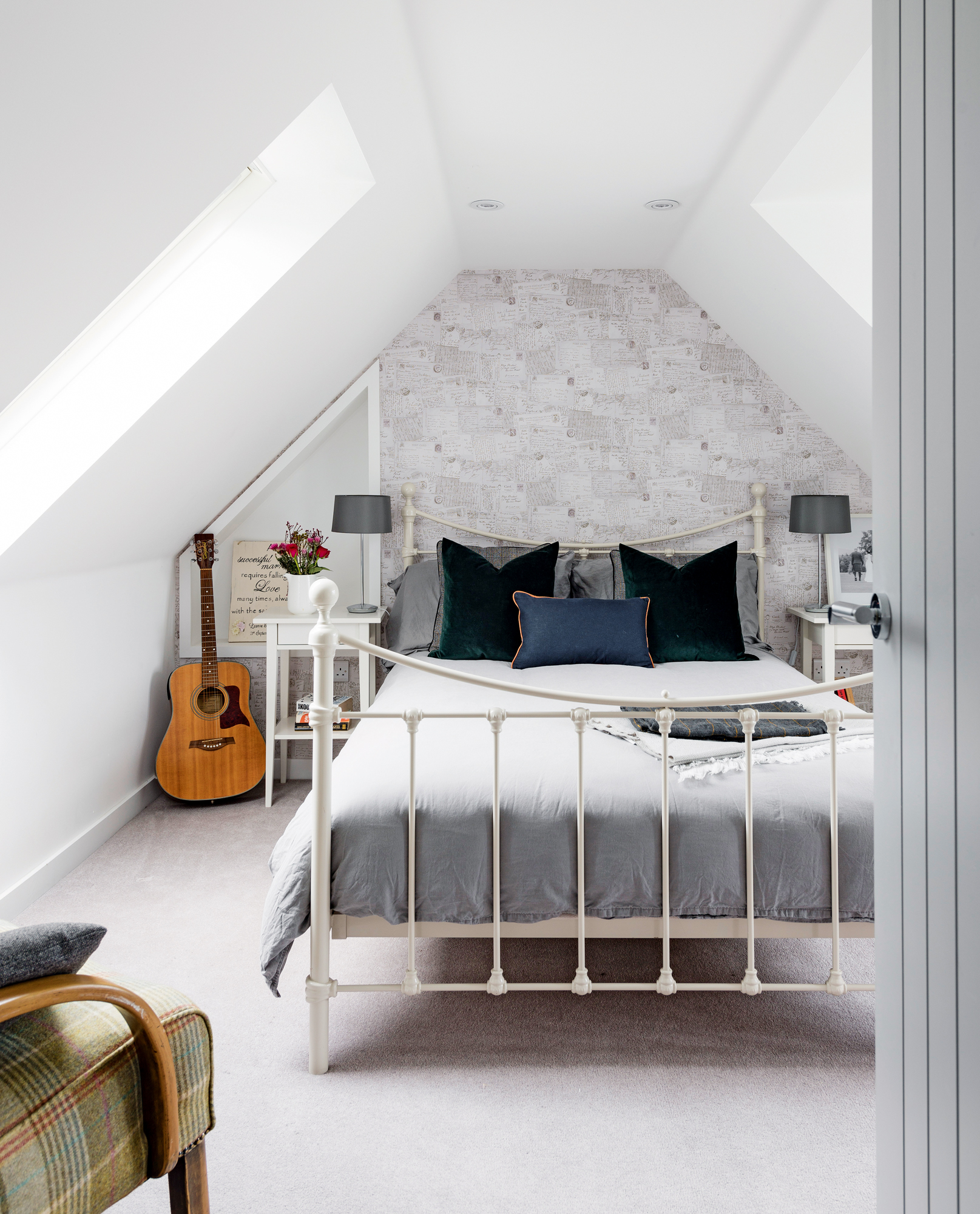
If you're wondering how to add value to your home, this is one of the best options. Loft conversions in a typical 89m² three-bedroom terraced house would cost from around £1,000 per m², depending on where you live. This will create a new room measuring 22 to 28m². This is enough space for a good-sized double bedroom extension, possibly with a small en suite shower room.
Get small space home decor ideas, celeb inspiration, DIY tips and more, straight to your inbox!
Such a project would likely be covered by permitted development rights and so would not require planning permission, though the work would have to comply with building regulations. This is a job for a building contractor or specialist design-and-build loft company. Find out more about loft conversion costs and more in our guide.
2. An above-garage room extension
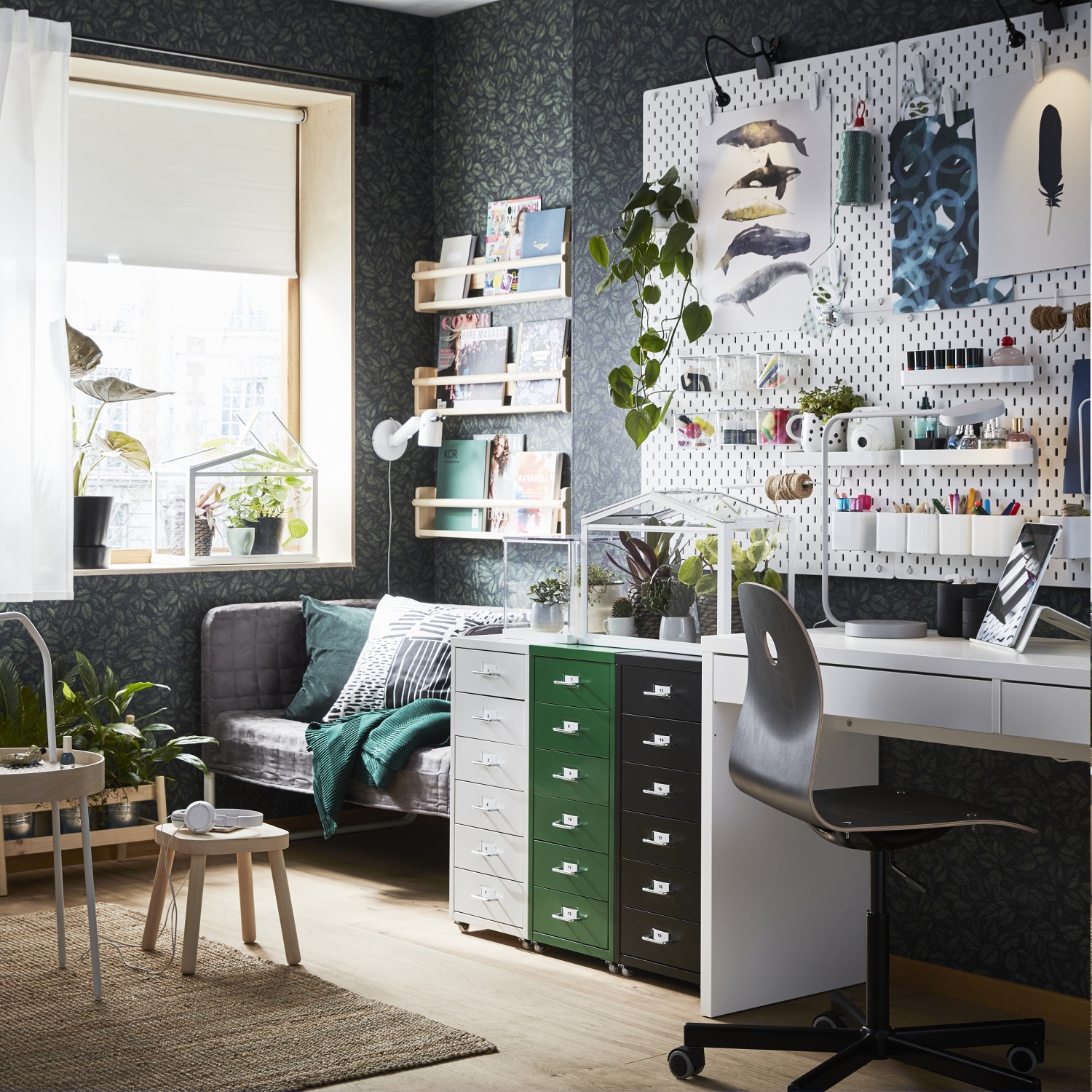
House extensions for every budget between £20,000 and £30,000 can include building an extension over a garage that's already there. It is more cost-effective than building a new ground-floor extension, providing the existing foundations can take the load (an engineer or surveyor can advise).
You’ll also need a designer and contractor. An added bonus is that no garden space is sacrificed, but in most instances you will require planning permission from your local planning department, with the application fee costing £172. A 17m² extension above a typical attached single garage would cost £900 to £1,500 per m². Building regulations would apply, of course.
3. A conversion of an integral garage
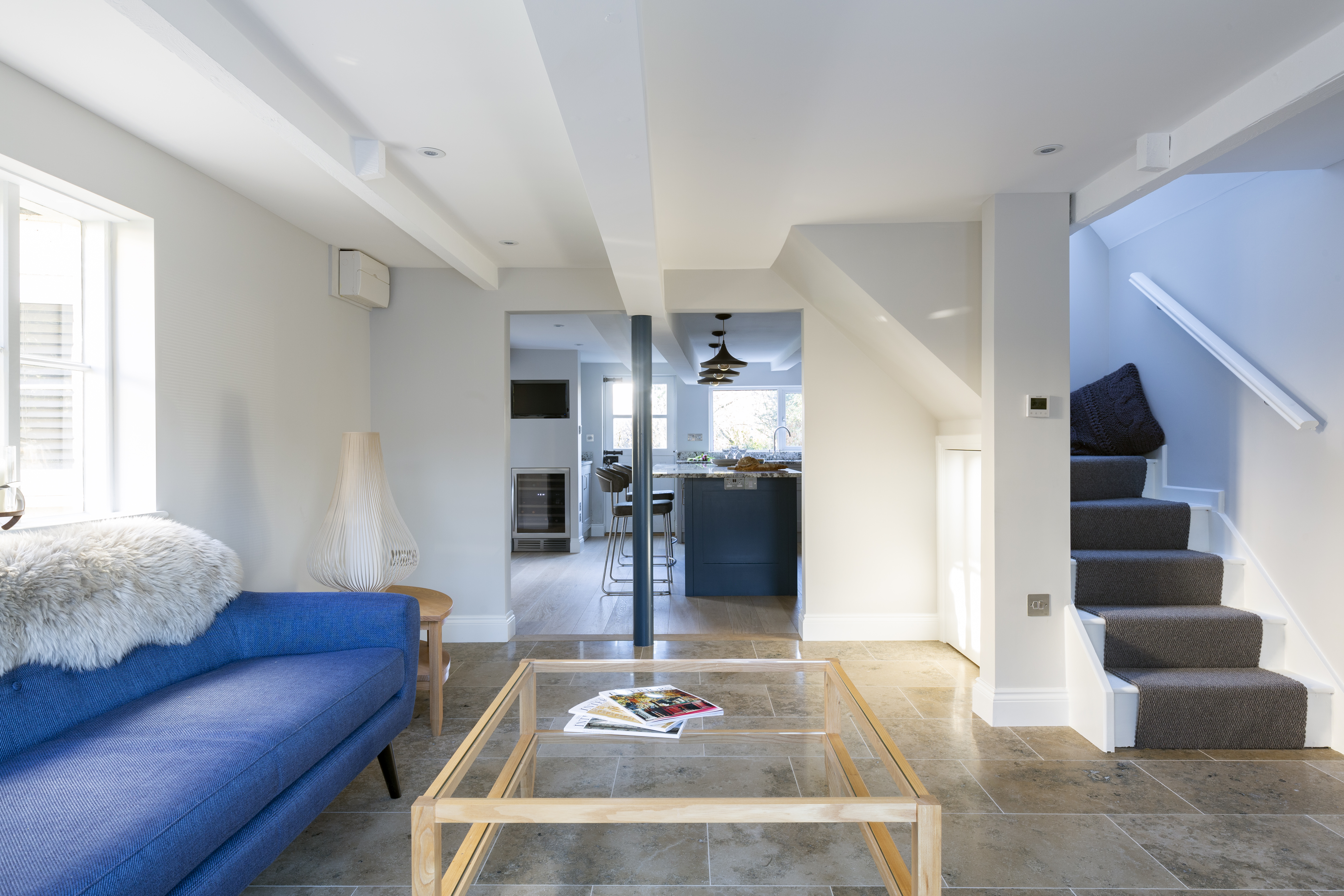
This former garage has been converted into a living space and knocked through to the main house to create a large, open plan kitchen, living and dining space. See more of this room in our garage conversion ideas gallery. Architect, Stephen Graver
If you don't have the budget to create the extension you want, a more cost-efficient way to get the rooms you need is to look at reworking the space you have.
If you rarely use your garage and parking isn't at a premium where you live, it may be worth creating another habitable room by converting your garage.
You can expect to pay between £5,000 and £7,000 upwards (depending on spec); that's around £1,000 to £1,250 per square metre – if the walls and floor are stable, there is a watertight roof, and the ceiling height is sufficient to leave around 2.2m to 2.4m of headroom after building up the floor by 15cm above external ground level.
Design fees for a garage conversion range from £1,200 to £2,500, plus £300 to £400 for a structural engineer. A typical single garage conversion (18 square metres) would cost around £17,100 to £23,900 plus VAT, depending on specifications.
If the structure is attached to the house, rather than integral, and needs structural repairs, it may be more cost-effective to demolish and replace it.
Find out more about garage conversions – from planning to design – in our ultimate guide.
4. A single-storey side or small rear extension

This contemporary sun room by Crichton Wood Architects replaced Anne and Jim Gilchrist's old scullery and coal bunker. The couple could have achieved more space with their £22,000 budget by choosing a classic timber-and-glass conservatory, but love the resulting high-quality, individually designed space, which is integral to their house.
A single storey rear extension is the perfect way to create extra living space in your home, while transforming your space to better suit your lifestyle too. It's the perfect spot for a new, open plan living, kitchen and dining area that make for perfect family spaces and, of course, are so beloved by potential future buyers.
Those on a budget between £20,000 and £30,000 would be able to build this type of small house extension, of around 20m², at a cost of £1,050–£1,450 per m². This would be sufficient space to extend an existing room, or to add a good-sized home office or utility room to your house.
Usually such extensions would be covered by your permitted development rights which will help keep costs down somewhat, but always check. And building regulations will apply. Don't forget to add on professional fees, and to calculate interior fit out costs carefully.
5. Use a side return extension to create a kitchen diner
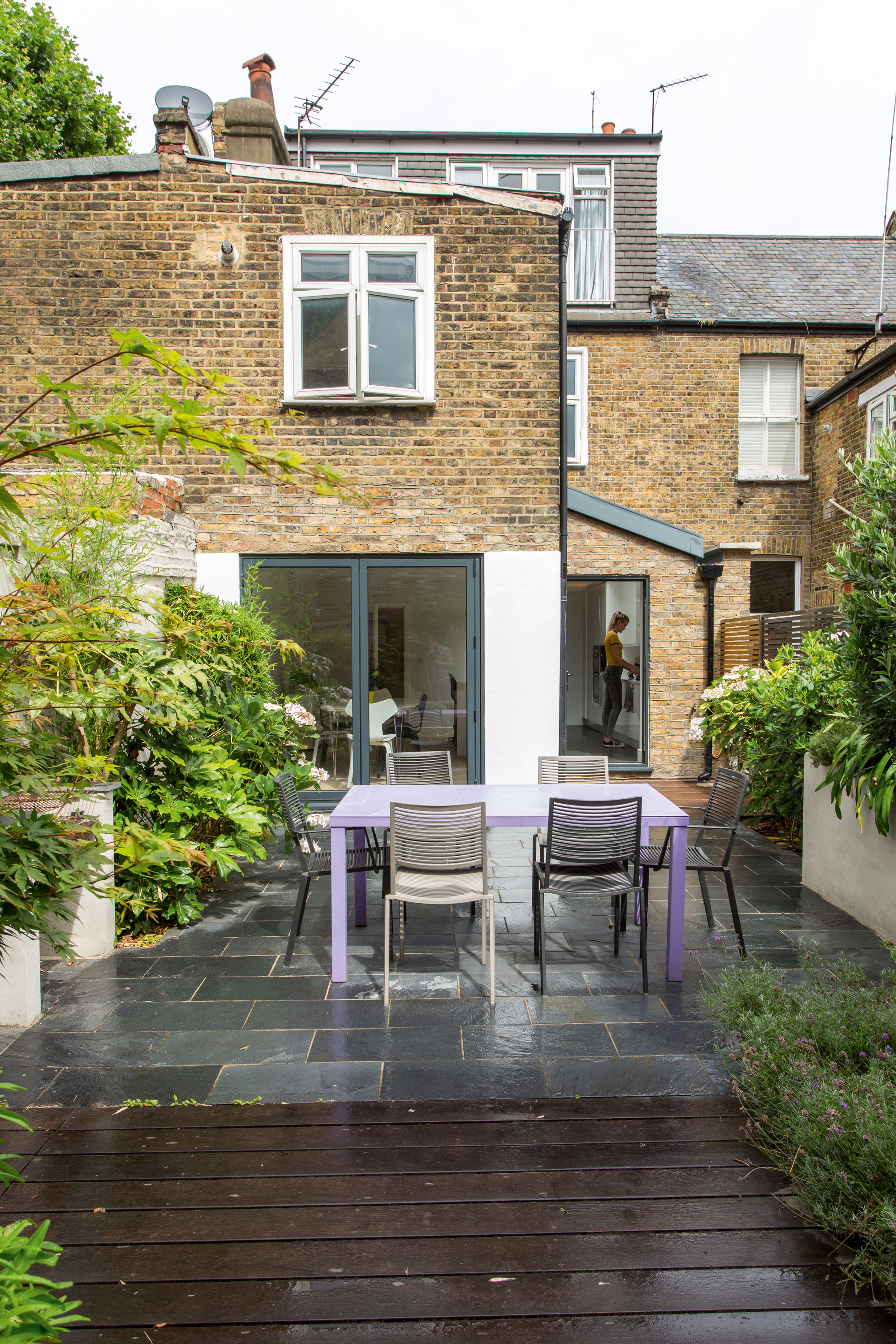
As garden space, side return extensions often aren’t well used and don't add value to your home, so building into one can be a great option to transform an existing and perhaps narrow, back room into one that's spacious and light-filled.
Frequently used for kitchen extensions to turn a small space into generous, open-plan kitchen-diners, such an addition can help provide garden-facing dining and seating, or the extra width could even contribute to a reconsidered, more open-plan layout throughout the ground floor.
As mentioned above, you probably won’t need planning permission for this type of extension. The current permitted development regime allows single storey side extensions up to a maximum of 4m high and a width no more than half that of the original house. If the extension is within 2m of the boundary, eaves height should not exceed 3m.
Building work costs depend on the results you're after, but reckon to pay around £1,500 to £1,900 per square metre for basic quality; for a side return extension of 2m x 5m, the build cost could be as low as £20,000 upwards.
For advice on kitchen extension costs you can read our guide.
6. A conservatory or orangery house extension
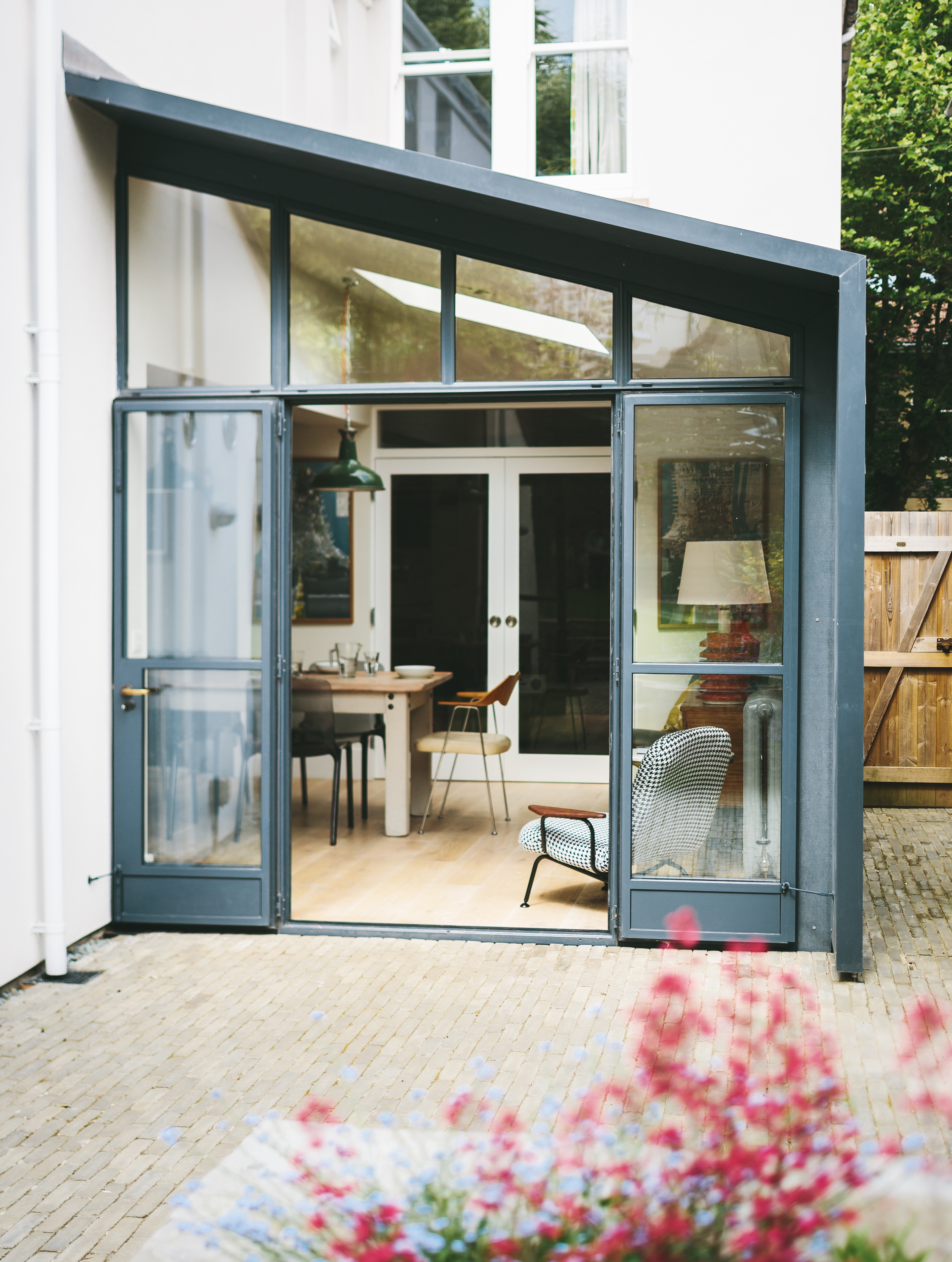
Conservatories and orangeries come in all guises, from period-style to more contemporary builds, and the more affordable end of the market is well within the reach of someone with a budget of up to £30,000.
Most people will hire a conservatory or orangery design and build company for ease, but you can do it on a DIY basis to save money.
DIY conservatories can cost as little as £3,000, and come in a range of standard designs, ready for installation by you or your builder. Bespoke conservatory or orangery companies offer tailor-made designs, with lower to mid range styles costing from £10,000 to £15,000. Find out how to plan a conservatory and how to add an orangery, too.
7. A garden room
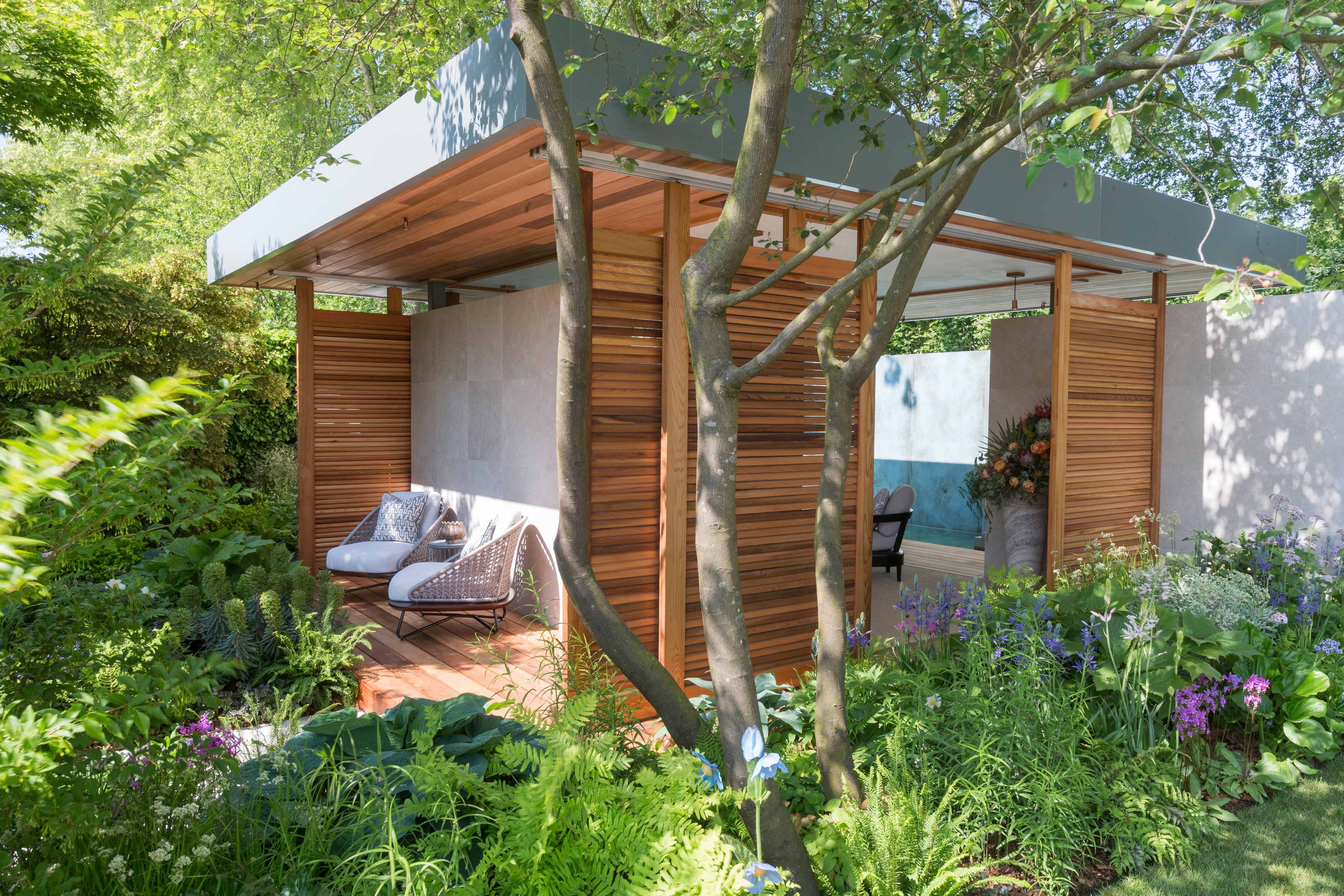
Building a garden room is a great solution if you need more space but have no room for an extension within or near the house. A room in the garden might solve all your space problems, be it a home office or cinema room. You could also use it as a home gym, hobby room or children’s playroom. Or maybe it’s for outdoor dining when the weather’s cooler, or a sheltered spot to enjoy the garden from? For a complete roundup of garden room ideas be sure to check out our feature.
Garden room costs vary according to their size; whether they are modular or bespoke; the quality of the materials used; the doors and windows specified; the level of insulation required; and the interior and exterior finishes.
For a modular kit, expect to pay anywhere between £2,000 and £30,000. For a completely bespoke building, expect to pay between £800 and £1,600 per square metre. Find out more about adding a garden outbuilding in our guide.
8. Build a porch to turn a hallway into a living space
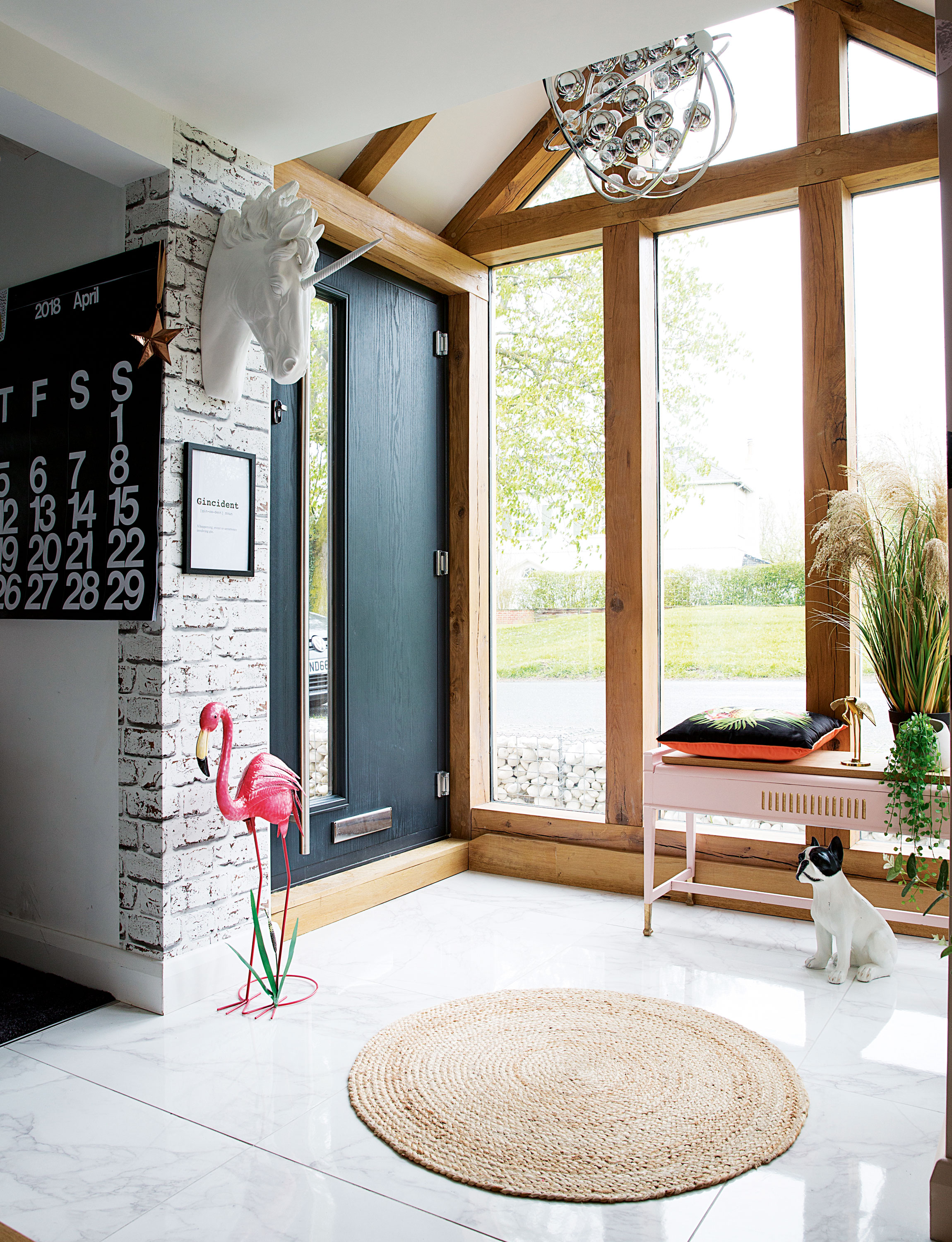
Can you extend the front of your house? You sure can. Adding a porch is a great house extension idea to help add character to a featureless frontage, as well as providing extra, practical storage space indoors. It is especially worth considering if your front door opens straight into a living room rather than a hallway.
Think carefully about design; the porch should be constructed in a style that suits the original architecture and in proportion with the size of the house.
When designing an enclosed porch, consider the impact it might have on the natural light that flows through your existing front door – you may be able to improve the amount of daylight with a well-considered design.
A brick-built porch with a new front door can cost anything from £3,000, depending on size and materials.
Find out more about adding a porch in our practical guide.
House extension ideas for budgets between £30,000 and £50,000
This budget will comfortably allow you to create substantial house extensions, including loft conversions, garage conversions or basement conversions, large single-storey extensions and even a modest two-storey extension. Here, we show great examples of house extensions for every budget between £30,000 and £50,000.
9. A larger, orangery-style rear extension
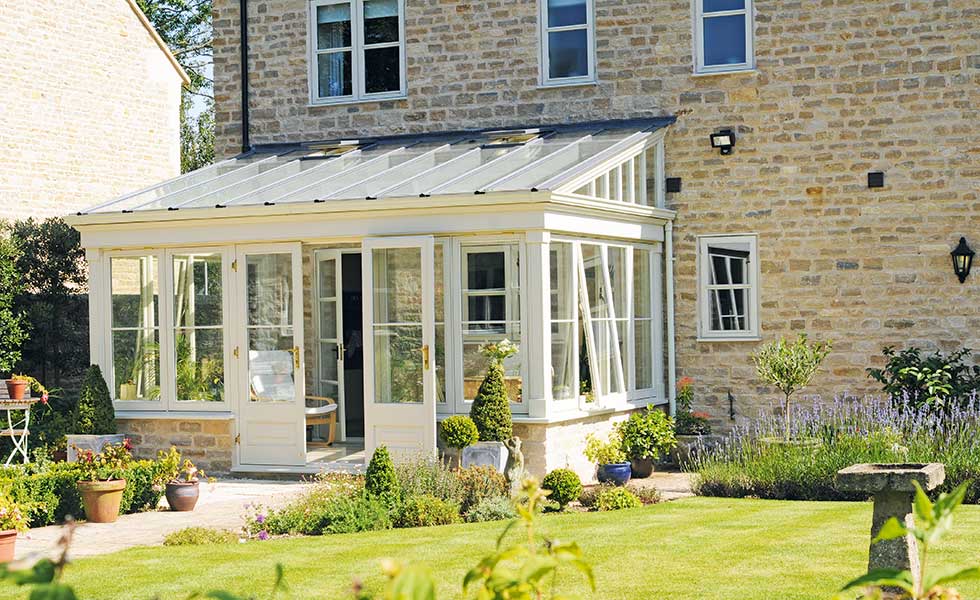
The owners of this Somerset house required both extra living space and a small dining area. They chose to extend with a conservatory from David Salisbury which would create a light-filled room to suit their property. It cost around £40,000
A traditional-style house extension option, an orangery is designed to be in keeping with a period house and measuring 30m², would cost between £1,250 and £1,450 per m² depending on location. A room measuring 4m x 7m would be ideal for a dining or sitting room and, in many instances, would fall within permitted development rights and so not require planning permission. Find out how to plan and design an orangery in our guide.
10. A loft conversion with bedroom and bathroom space
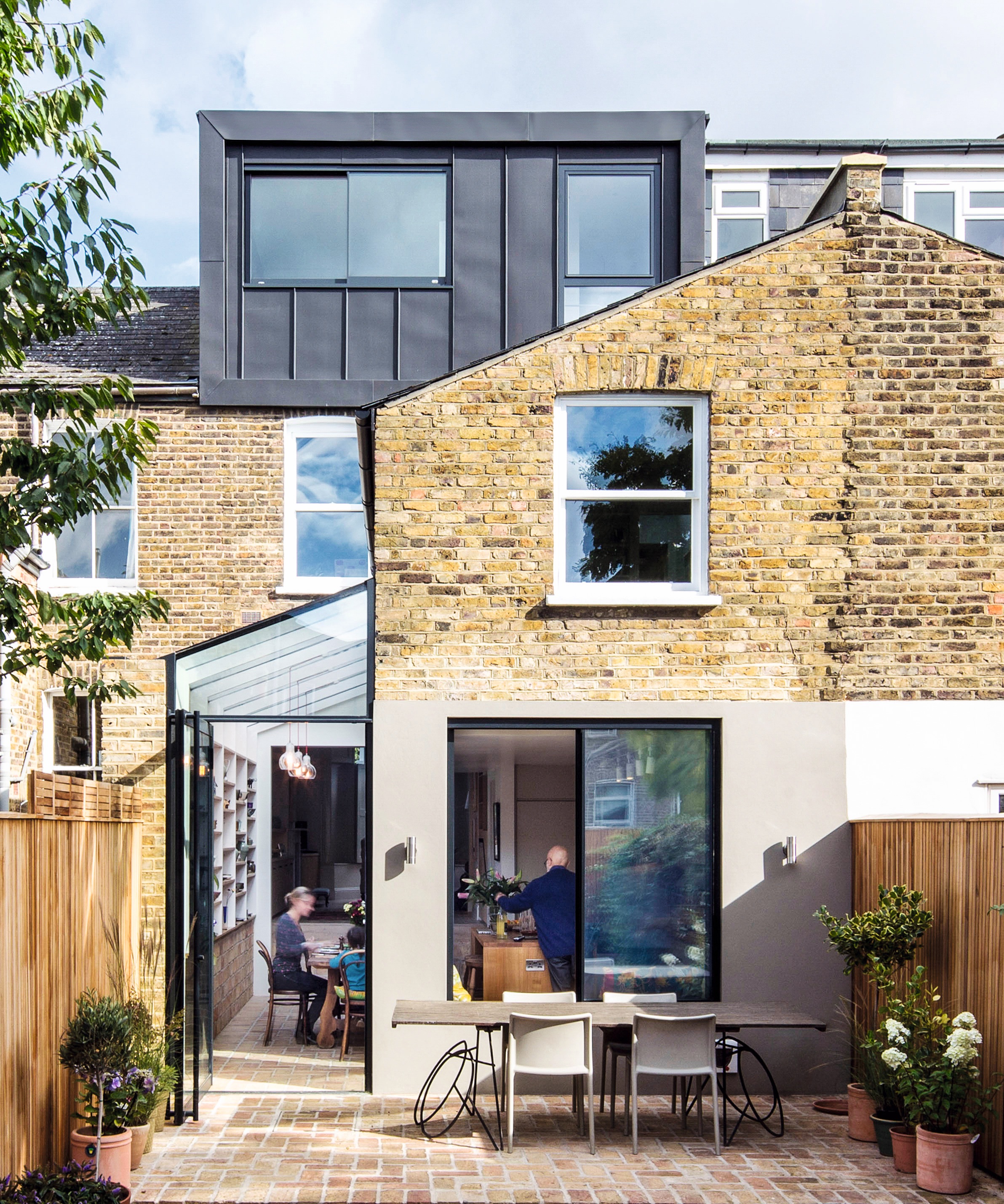
As well as offering valuable extra living space, loft conversions give one of the best returns on investment you can get when it comes to extending, and so are one of the best house extensions you can do.
And because most loft conversions are generally allowed under permitted development rights, there’s no need to go through the lengthy process of obtaining planning permission.
The cost will vary depending on size, but you can expect to achieve this type of house extension for every budget between £30,000 and £50,000. A typical conversion with a rear dormer in a mid-terrace property costs around £35,000. You’ll find small companies will usually charge 10 to 15 per cent less than large companies. Find out more about planning and designing a loft conversion in our guide.
11. A double garage conversion for expansive living space
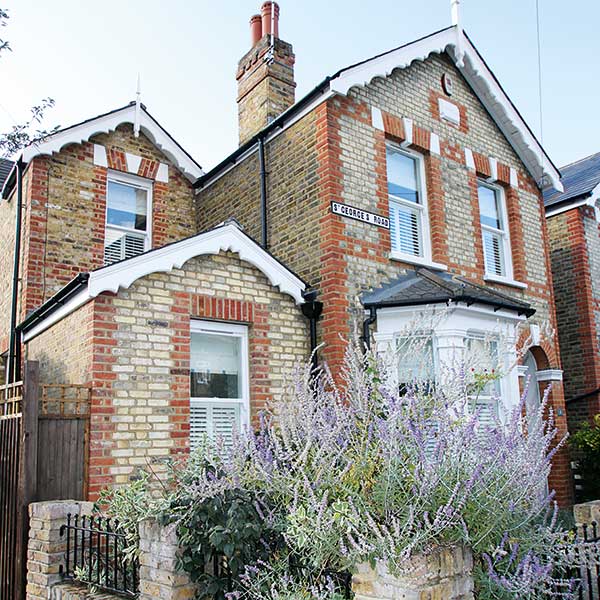
An attached double garage measuring 28m² could be turned into extra living space at a basic cost of £850 to £1,050 per m². To then integrate this space into the existing house by removing the partition wall – replacing it with an RSJ – will add around £5,000 to the cost.
If the space were to become a new kitchen, the cost of new units must also be added at around £5,000 upwards, depending on the kitchen supplier chosen. Your permitted development rights mean a garage conversion will not usually require planning permission, but it must comply with building regulations as the project would constitute a material change of use. Find plenty more garage conversion ideas in our feature.
12. A cellar conversion for added living space

An existing cellar measuring around 35m² could be converted into an additional living room or home office at a cost of around £850-£1,050 per m², including damp proofing (a tanking membrane) and insulation.
Adding a new lightwell and window would cost an additional £4,000-£5,000. Cellar conversions come under permitted development rights but, as above, this is a material change of use. For details of specialist cellar-conversion firms, try basements.org.uk. Find out more on basement conversions in our piece.
13. A side return extension to expand a kitchen
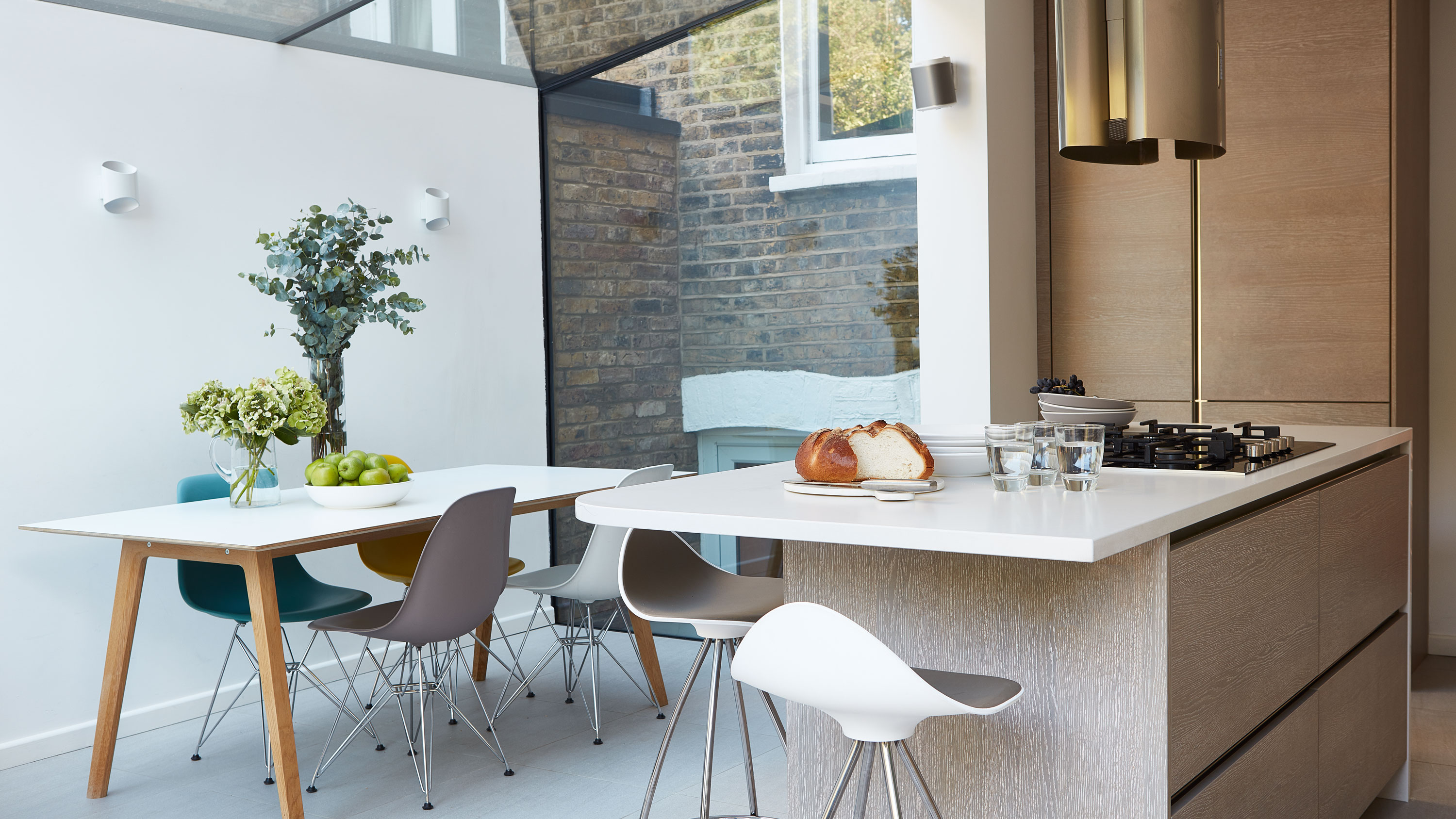
Side return house extensions are a good way to incorporate often unused or under-used garden space into your home, creating a much larger, open-plan room that's ideal as a kitchen diner living space combined. This type of extension is also the perfect opportunity to bring more light into what is usually a terraced house, with large rooflights, panels of glazing and French, bi-fold or sliding doors creating a bright, contemporary home.
Budget for £1,050 to £1,450 per m², although bear in mind that large expanses of glazing will bump up the cost significantly.
14. A small double storey rear extension
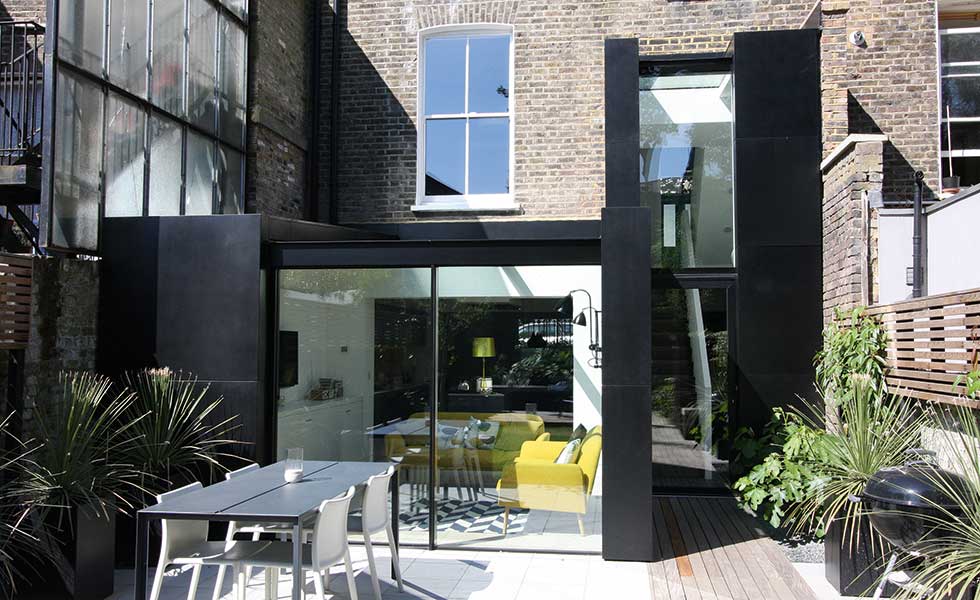
HUT architects designed this extension to a family home in London with the help of IQ Glass. The owners wanted a minimal extension with plenty of personality, that would maximise light and space. A dramatic double-height box on one side draws light up the staircase. It cost £36,000 for the design and installation
This level of outlay could be sufficient to create a substantial single storey house extension, 30m² to 40m² – budget for £1,050 to £1,450 per m².
This might be enough to extend by around 4m right across the back of a typical semi or detached house, with either a flat or low-pitched sloping roof – as a single storey or side return extension, both ideal for creating a large open-plan kitchen-diner.
A contemporary design with folding-sliding doors, glazed roof lanterns and large floor-to-ceiling glazing units would cost £1,800 to £2,200 per m², so on the same budget, the scale of the space may need to be reduced to around 23m².
15. An expansive double storey house extension

The owners of this stone-built farmhouse, which is located in a small town between Carmarthen and Lampeter, in west Wales, tasked oak frame design-and-build specialist Arboreta with creating more space. The extension was designed to take in views with a sunroom downstairs and bedroom above. Lots of glazing was incorporated while maintaining a look that was sympathetic to the period style of the home. A similar oak-framed extension would cost around £35,000 from Arboreta
A double storey extension is cost-effective as it doubles up on the use of the foundations and roof – two of the most expensive parts of a build – a two-storey extension on this budget could measure up to 30-40m² (both floors). At the rear of a property, this would typically extend the kitchen with a new bedroom above.
Many such extensions projecting no more than 4m from the rear of the original house are covered by permitted development rights, but a two-storey side extension will require planning consent – and don’t forget building regs.
16. An extension for a bungalow to make it family-sized

Whether you're looking to extend a bungalow or want to join two distinct buildings together – perhaps the original house and a garage conversion – a glazed walkway can be a very successful and cost-effective way to do so. Whether your home is modern or traditional, a glazed walkway can be a great solution to planning restrictions on period properties, or homes within conservation areas – a listed building for example – where a solid link would be inappropriate or not permitted.
17. An inventive and practical house extension
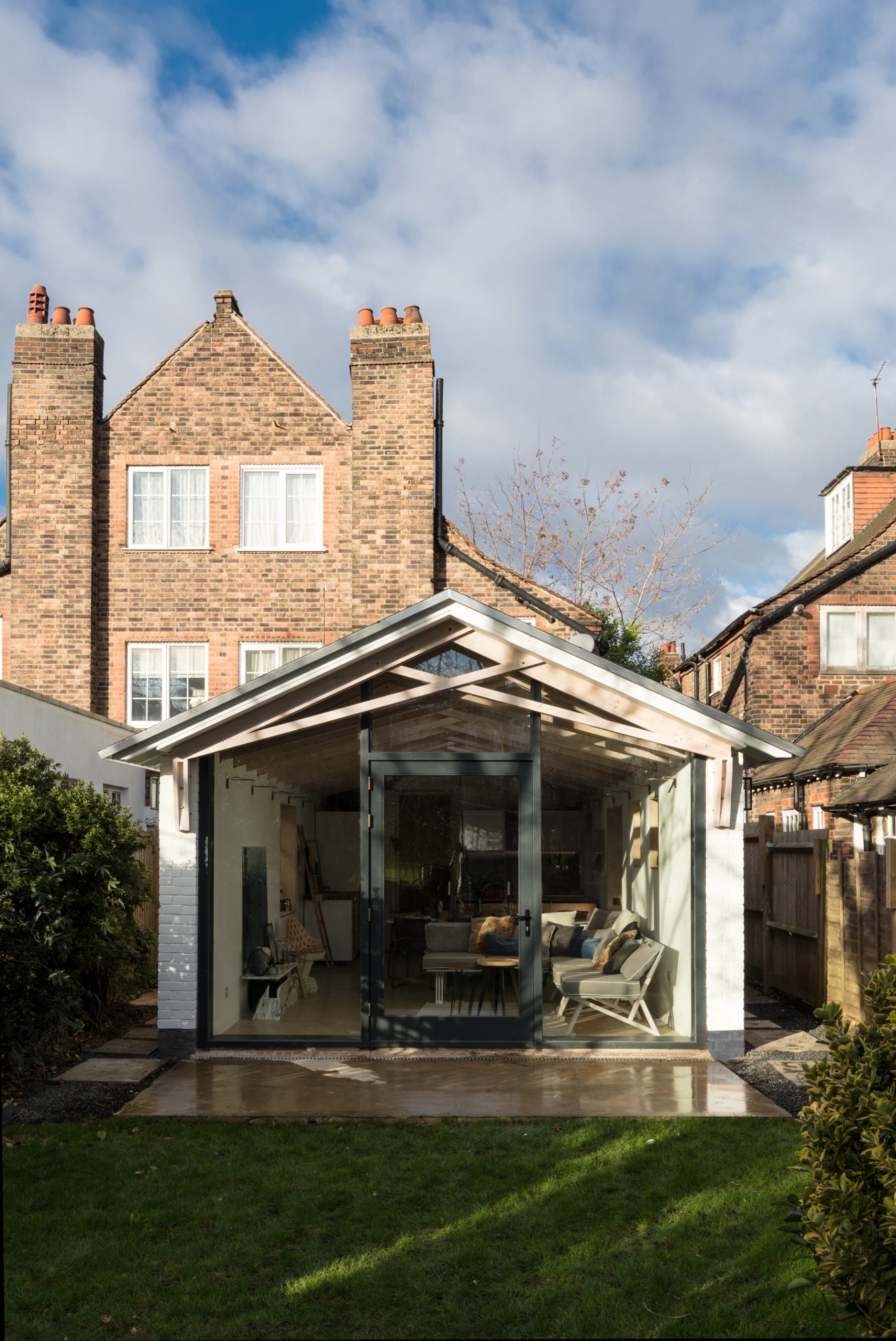
Using basic building materials is a great way to keep costs low and if you can do some of the work yourself, all the better. That doesn’t mean placing limits on the design, though. The striking exposed scissor truss timber roof of this brick extension, which was built by hand on site using standard materials, is topped with a green sedum roof.
Architect Henry Smith of Studio Mesh and his brother Alec took on most of the construction work themselves when extending a one bedroom flat in an early 1900s dairy cottage into a 77sq m two bedroom flat for just £39,500.

18. Rejig the layout to create a connection to the garden
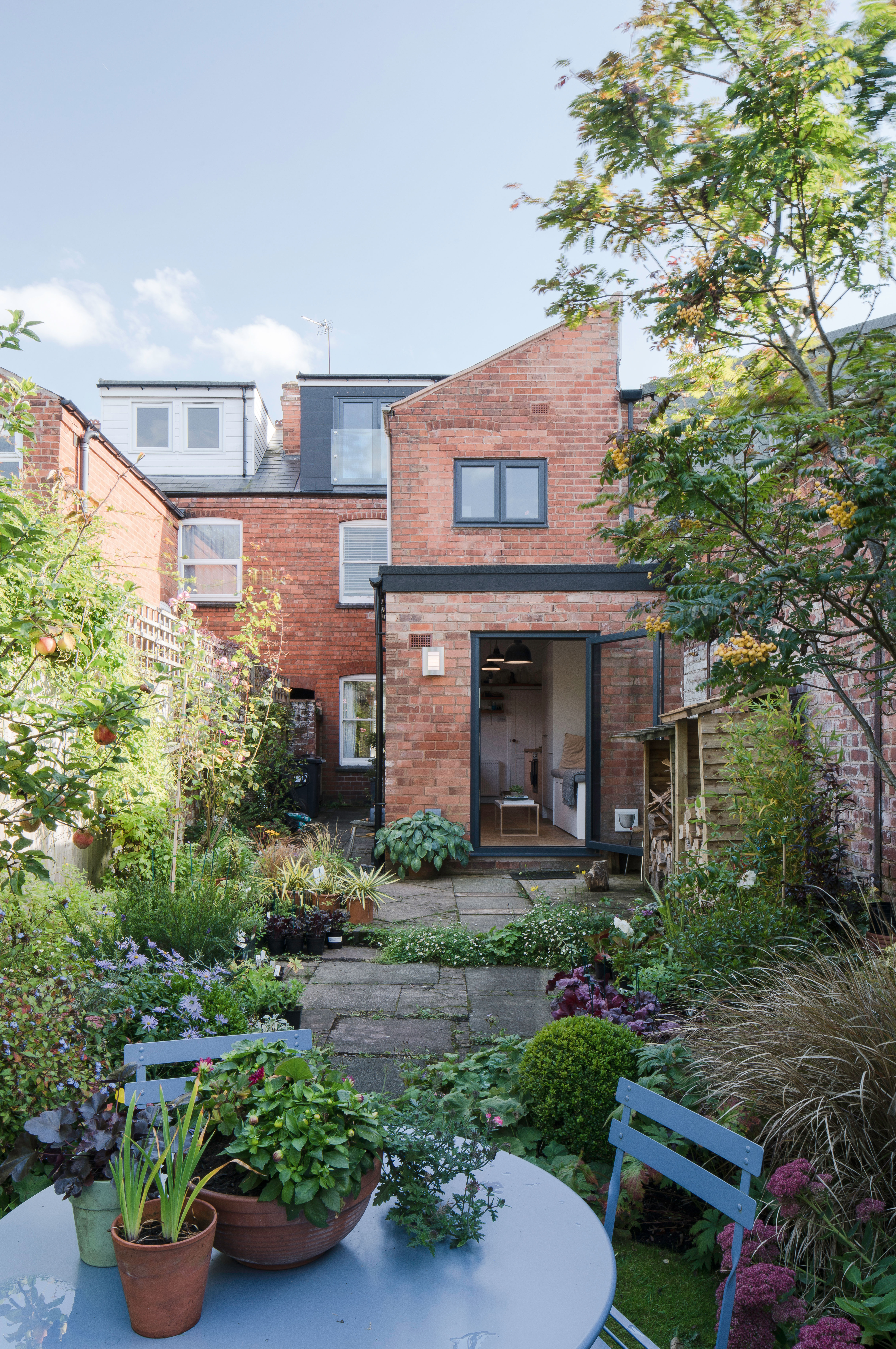
Another inventive house extension idea is to rethink the overall floor plan and design. Above, Julia Little added a dormer loft bedroom, created a bathroom and reconfigured the ground floor of her home under permitted development.
'Before, the house was cold, and dark at the back. I’ve always liked the garden, but there was no view of it from the house. The only bathroom was an uninsulated room downstairs at the back of the house. I considered moving, but I love the street, the garden and the house itself too much,' she said.
'I knew I would need to borrow to buy another house, so why not spend the difference on making the house better instead? There were no planning permission required, so things progressed fairly swiftly.'
'My son’s old room became the bathroom and the front bedroom is now the guest room. The ground floor hasn’t changed its footprint. The kitchen now takes up all the space of the previous kitchen, lobby and bathroom. Now the house accommodates guests, family and a business. I can see the garden and the changing seasons – in summer, with the large door open, and in winter, snug inside.’
The project cost £43,000 including kitchen and bathroom, by Intervention Architecture.
Find out how to successfully link your indoor and outdoor spaces.
House extension ideas for budgets between £50,000 and £90,000
With more money, you could achieve larger scale extensions, such as double storey additions, or you could take on a unique build to totally transform your home life. Perhaps a large loft conversion, a kitchen extension, a stand-out glazed extension or a basement conversion. Here, we take you through house extensions for every budget between £50,000 and £90,000:
19. A kitchen extension with space for lounging too
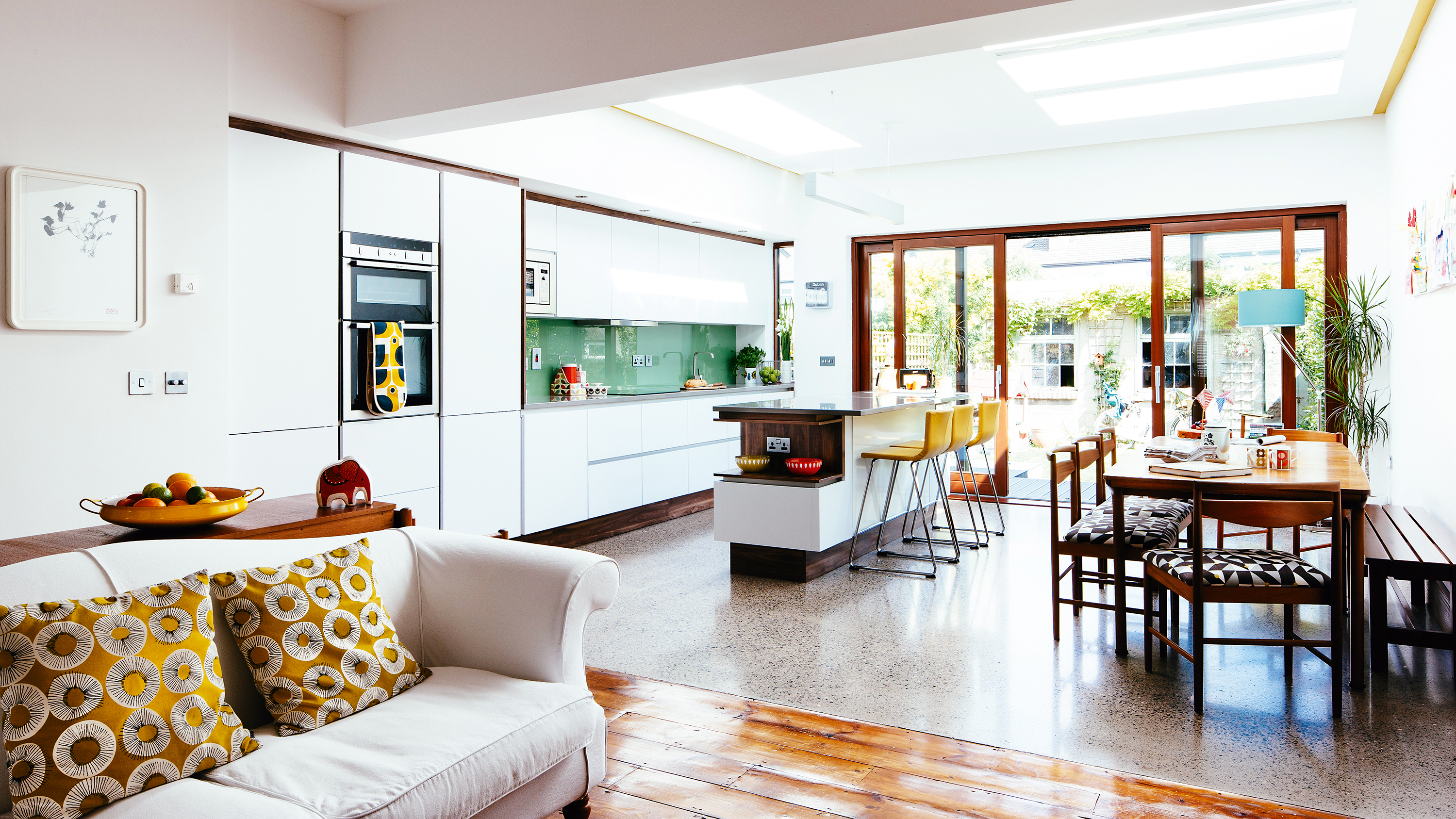
Building a kitchen extension is the perfect opportunity to improve the entire ground floor of your home, with a simple change of layout, the introduction of natural light, and the addition of appliances that could make your life easier. Plus you can expect this type to fit into the house extensions for every budget between £50,000 and £90,000 category in many parts of the country, with the exception, potentially of London.
If you have the space, plan to create an enhanced room that doesn't just including kitchen and dining areas, but a zone for lounging, too. It's also really worth maximising the connection of the new room to the garden with bi-fold, sliding or French doors if doing house extensions in this way.
Prices will vary depending on the work you carry out, but as a guide, plan for between £1,200 to £3,000 per m² and upwards for building work; £17 to £200 per m² for a new kitchen.
20. A large loft extension to expand your bedroom count

Extending the loft on a large semi-detached house and converting the existing roof space will cost £850 to £1,450 per m² and, at this budget level, you could add two good-sized bedrooms and a bathroom, or one very generous master suite with dressing and shower rooms.
In England, quite substantial loft conversions are still covered by permitted development rights. Larger conversions and those involving the addition of a window facing the highway will require planning consent. Building regs apply to all work.
21. Add an annexe

See more of this cottage annexe
A step up from a garden room, an annexe is associated with, but not necessarily connected to, the main house. Unlike a garden room, its intended use isn't now and then – if anything, it can be a fully-occupied mini-property on your land, giving the occupant (a friend or relative – where do you think the phrase 'granny annexe' came from?) a degree of independent living. As such, it usually has a self-contained bedroom and living room, a bathroom and kitchen. It can have its own entrance.
As a rough guide, expect to pay around £1,500 to £1,900 per square metre for an annexe of basic quality, and up to £2,200 to £2,400 per square metre for excellent quality. Find out more about building an annexe – including all the info on rules and regs – in our guide.
22. A value-adding double storey side or rear extension
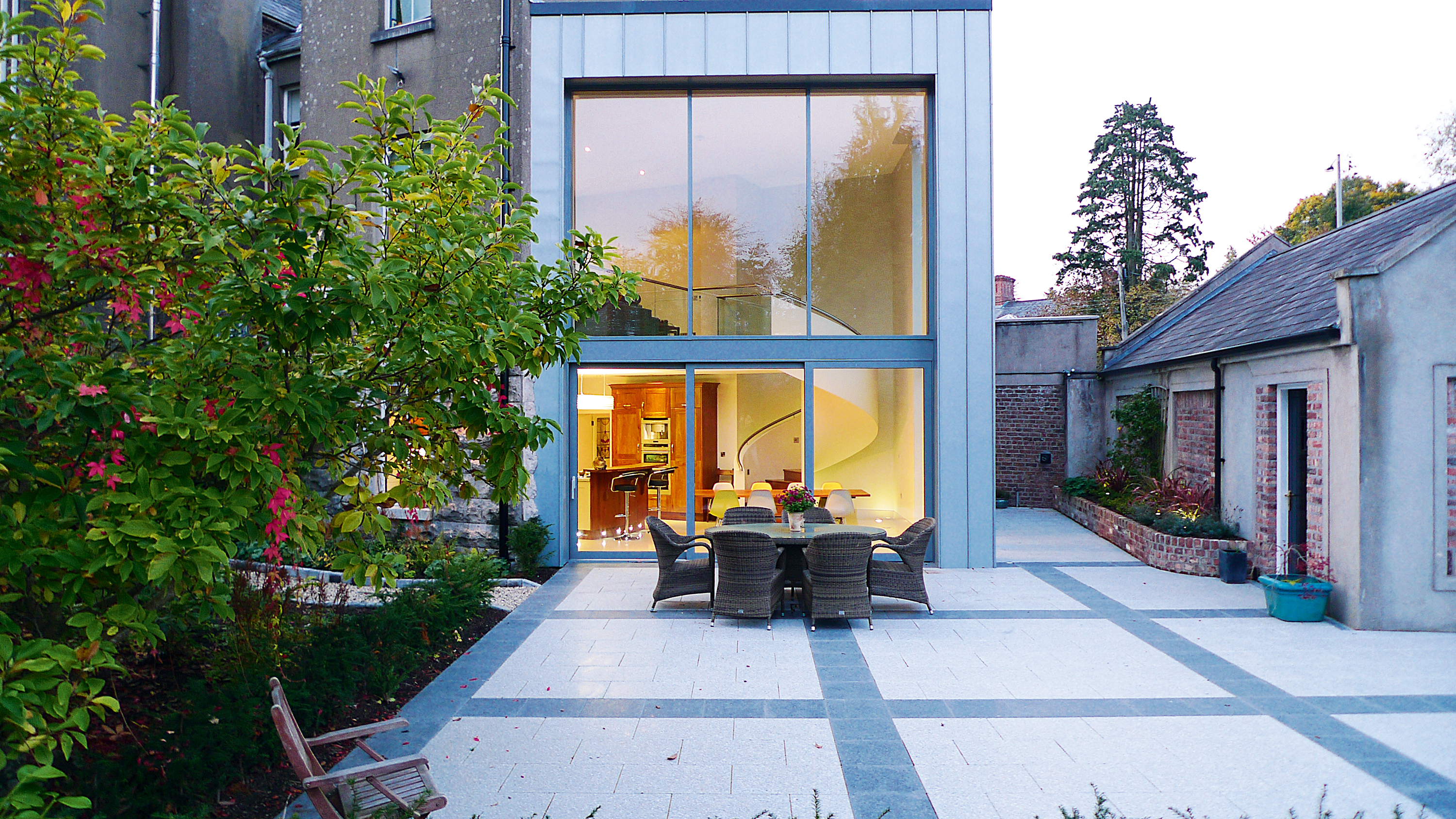
Two storey side or rear house extensions are really cost effective, coming in at around £1,320 to £1,620 per m² for a standard build, so with this budget you could extend by at least 35m² – sufficient space to add a large kitchen and/or living room extension on the ground floor, with two new bedrooms and a bathroom above.
A large two storey extension is likely to require a planning application, so approach your local authority about this and for its advice on building regs.
23. A large side return extension
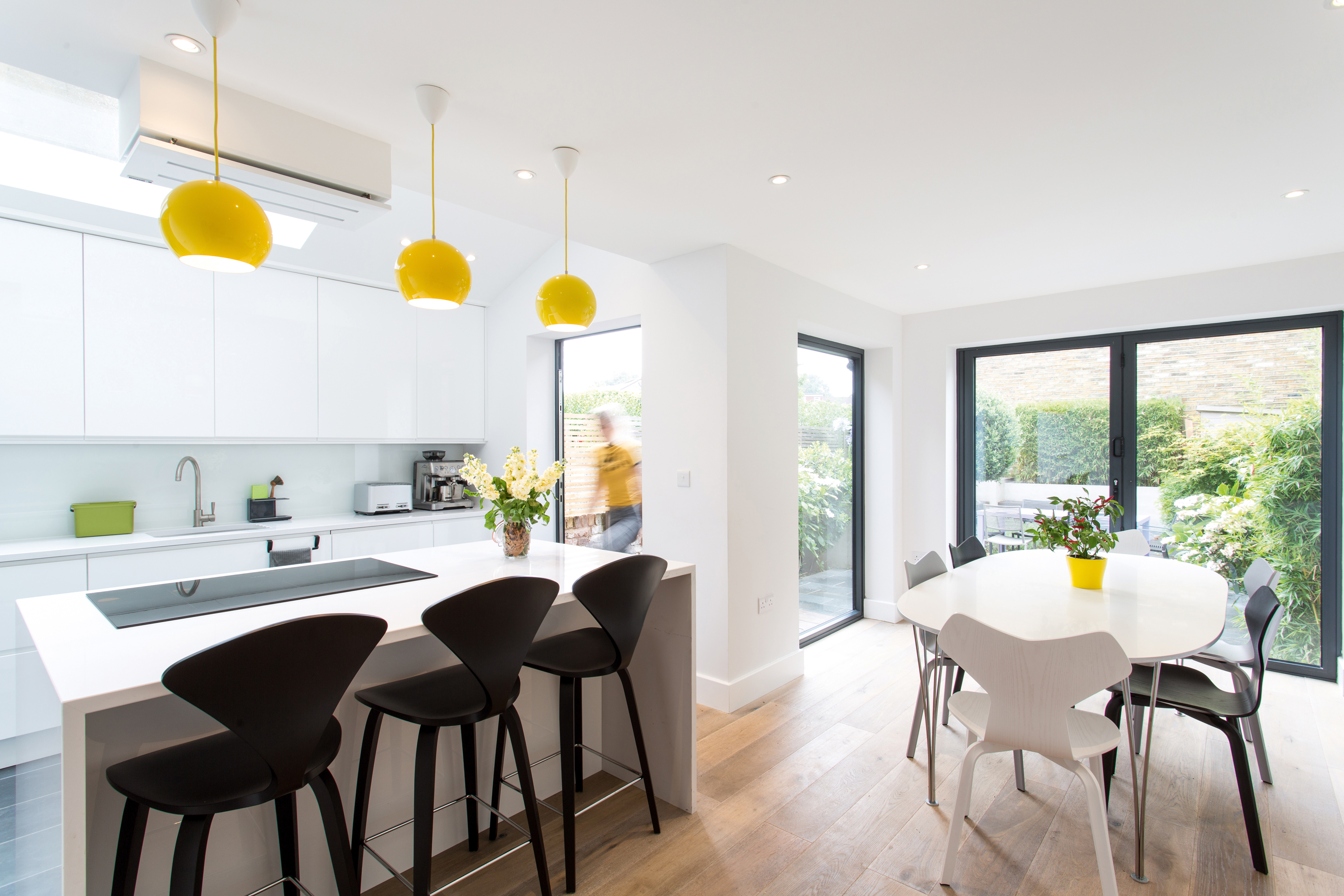
A side return extension is a classic way to enlarge a Victorian/Edwardian semi-detached or terraced house; some of these extensions go straight out to the side, across the full width of the property, filling in the alley alongside the kitchen; others go sideways and outwards; where space is available, side return extensions can even be combined with a second-storey extension above the original kitchen, creating an additional bedroom.
The trick to creating a successful side return extension is to find a balance between enhancing the internal space without sacrificing too much garden. It's also important to ensure that the house doesn't become unbalanced, with a large living area downstairs but few bedrooms upstairs. For this reason, it's worth considering a side return extension in conjunction with a loft extension.
This type of build involves opening up both the original rear and side walls of the kitchen at the back of the house, inserting steel beams so the new and old spaces become one. Such a project may also involve adding a small downstairs cloakroom/utility room and diverting the existing drains with the addition of a new inspection chamber in the garden.
While a single storey may come under permitted development rights in England, extending on two storeys and right up to the boundary is likely to require planning permission wherever you live. As usual, remember that building regs must be observed.
24. A glazed extension
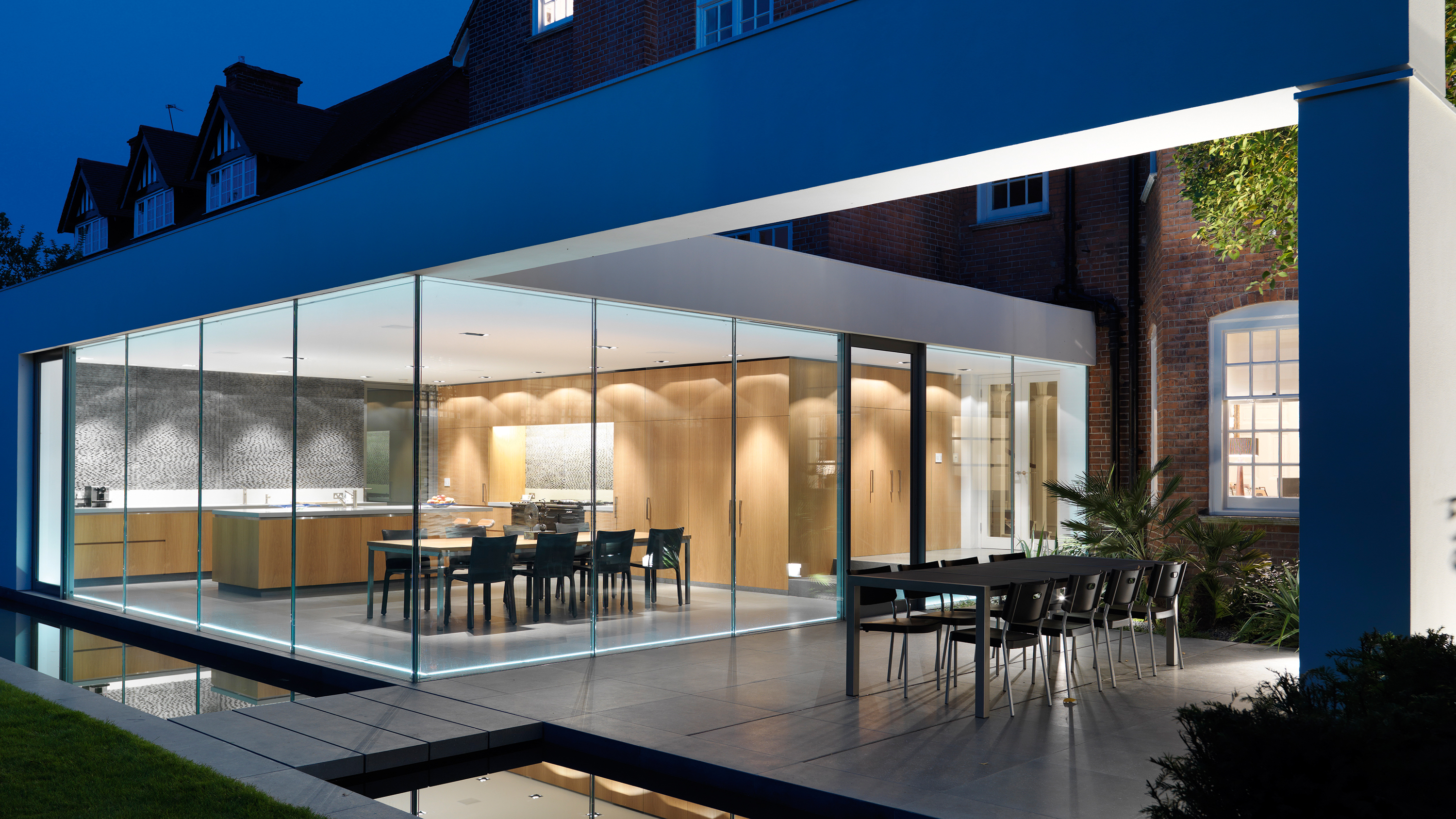
If you're looking at house extensions for every budget between £50,000 and £90,000, you might like to consider a glass extension. This extension type can look very impressive and can work with any style of building, including period homes, but can cost £3,000 to £4,000 per m². A large budget should be sufficient to pay for an extension measuring 15 to 20m², however – enough for a small dining or living room at the back or side of a property. Because of the specialist engineering involved, it is perhaps best to hire a specialist design-and-build firm – try GlasSpace or IQ Glass. They will handle building regs; a small extension is unlikely to require planning consent.
25. An expansive basement conversion

Converting a basement is just about the most expensive way to extend, but in a high-value area and with all other options exhausted, it may be the best option. At a typical cost of £3,000 to £4,000 per m² including light wells, even such a large budget will not go very far, creating perhaps a 15 to 20m² basement – ideal for a home office or cinema room.
For information on cellar conversions and basement extensions in general, contact The Basement Information Centre. Find out more about converting a basement in our guide.
26. A kitchen and bathroom extension
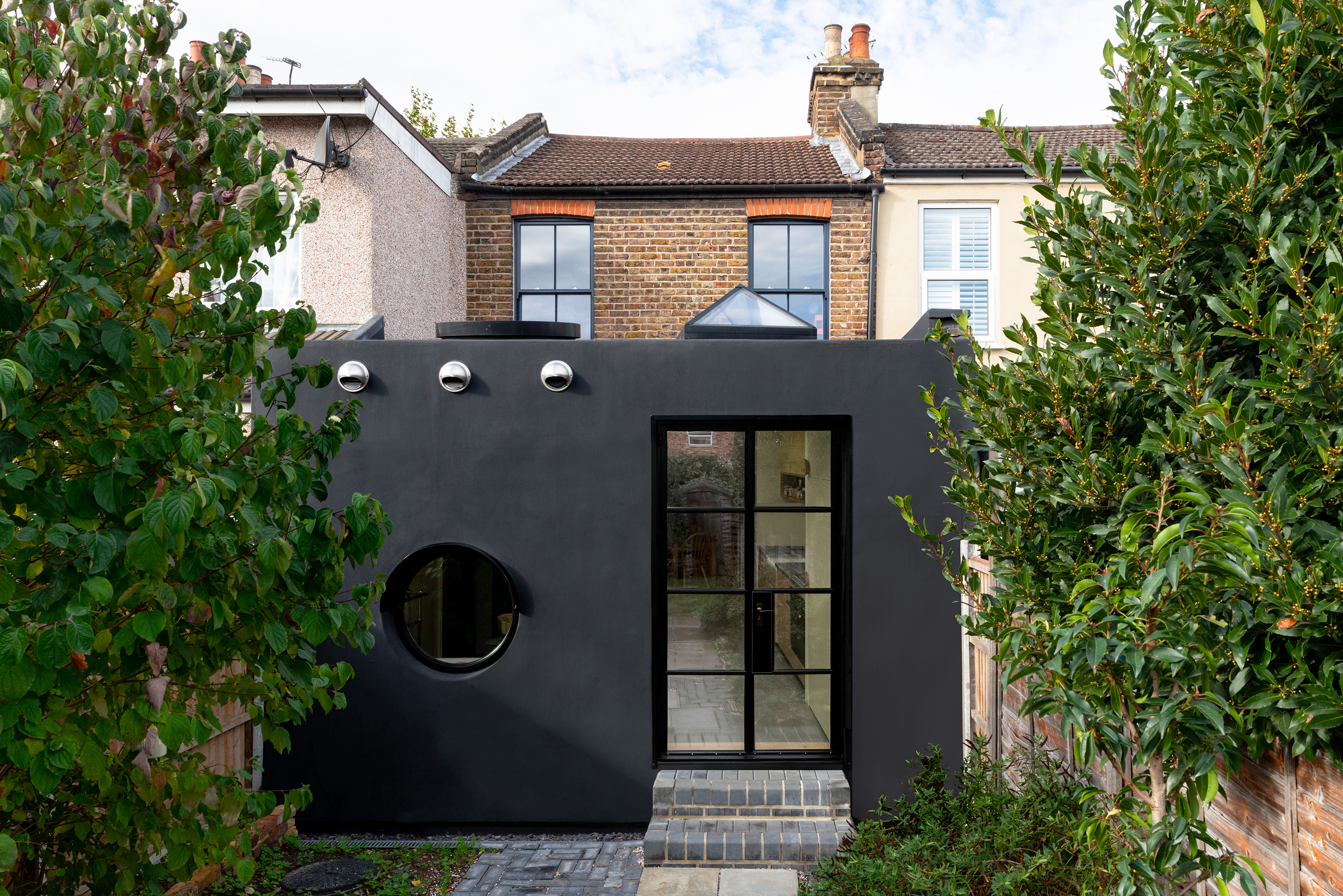
House extensions can be quirky and unique, and a unique extension could meet all your needs for extra space. In this case the challenge for architects Office S&M was to come up with a plan for a terraced house in North East London with a kitchen and bathroom, each overlooking the garden. They made best use of the restricted space by splitting the £90,000 extension diagonally with a storage wall, creating two angled rooms. The side with a circular opening contains the bathroom and the black-framed doors lead to the kitchen. ESW completed the extension in Prokol polyuria, a spray-on coating which was first developed for oil rigs.
Need more extension advice and inspiration?
- House extension suppliers: a sourcebook of the extension essentials
- Want a contemporary extension? Find out how to plan the perfect glass extension
Michael is Director of Content & Product Development for Future Homes. Prior to this he was Editor in Chief of Real Homes magazine, Period Living and Homebuilding & Renovating and he also served as Editor of Homebuiling & Renovating for several years. As well as being an expert in renovation, having presented multiple property TV shows and authoring Renovating for Profit (Ebury, 2008), Michael has a personal and professional interest in self build and helps others achieve their dreams of building a unique home. He is also Deputy Chair of NaCSBA and has campaigned for the self-build sector for many years, regularly sitting with government parties to advise on the industry.